Remembrance – Wilfred Dent Wroe
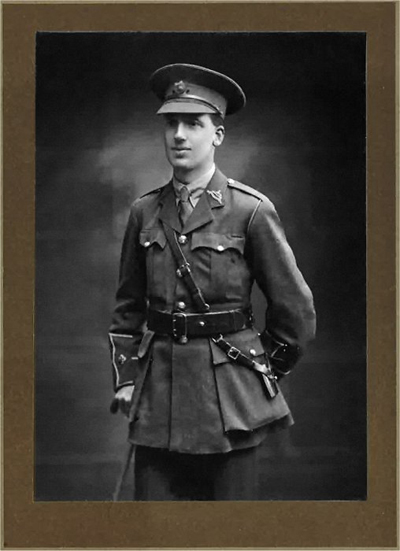
Today we remember local Baston man Lieutenant Wilfred Dent Wroe who was killed in action on this day, 29th June 1916, whilst serving with the 10th Battalion Lincolnshire Regiment on the Somme.
Wilfred Wroe was born on the 31st March 1884 in Burnley Lancashire to Dent Wroe and his wife Florence, nee Barnes.
Dent Wroe was a school master who was born on 9th March 1859 in Colne Lancashire, his wife Florence Barnes was born on the 19th August 1858 in Burnley. The couple were married on the 28th December 1881 in Burnley St Matthews.
The couple went on to have three children all born whilst they were living in the Burnley Area:-
• Wilfred Dent Wroe, 1884, Burnley
• Mary Wroe, 1886, Burnley
• Annie Wroe, 1887, Burnley
In 1891 the couple were living at 6 Harriet Street in Habergham Eaves, Burnley.
At this time Dent Wroe was a schoolmaster, Florence a School mistress and both Wilfred aged 7 and Mary aged 5 were listed as scholars. The youngest daughter Annie aged three was the youngest member of the family and also living in the house was Isabella Wardle their 15 year old general domestic servant.
In another 10 years time Wilfred had already left home and was working as a Pupil Teacher at Rugby St Matthews school. Wilfred and another pupil teacher, William Wright, boarded in the home of Henry West, a groom, at 43 Oliver Street, Rugby.
Wilfred received his early training at Rugby St Matthews and on the 3rd March 1905 it was reported in the Northampton Mercury that had gained success in the King’s Scholarship, Third Class – Division 1.
Between 1906 and 1908 Wilfred attended Saltley Training College (St Peter’s College, Saltley, Birmingham) arriving as an uncertified teacher.
During his time at Saltley he joined the College Guards, and as a precursor to his later service, he was also promoted to Sergeant in the Royal Warwickshire Regiment..
(Photo attached, Wilfred front row right kneeling, Saltley College Guards 1907. Photo with permission of Paul Nixon, British Army Ancestors https://britisharmyancestors.co.uk/ )
After qualifying as a teacher Wilfred moved to Lincoln in August 1908 to join the staff at the North District National School in Lincoln. During his time in Lincoln he was well known as a member of the Carholme Golf Club and he was reported as an enthusiastic Golfer. It was also reported that as a teacher he had a promising career and in social life he had a quiet and genial personality that endeared him to all.
The next official record for Wilfred was the 1911 census. By now he was living at 36 York Ave Lincoln, and his occupation was given as an elementary school teacher working for the borough council. He was once again boarding, living with Mary Ann Moses a widow and her daughters Mary Moses (38) a Dressmaker and Ellen Frances Moses (36), both single.
Wilfred was to move home once again before the beginning of the war moving only 2 minutes walk away, into the next street at 22 Albert Crescent in Lincoln. This was even closer to the West Common and the Carholme Golf Club .
We have been unable to find the official service records for Wilfred. This is common for WW1 soldiers as 60% of all their records were destroyed in a fire in a London warehouse where they were being housed in the Blitz. The following information has been pieced together using other available sources such as medals rolls, newspaper reports and especially the war diaries of the 10th Battalion Lincolnshire Regiment and effectively tells the story of not only Wilfred’s war but also that of the ‘Grimsby Chums’ the 10th battalion of the Lincolnshire Regiment.
On the 21st September 1914, three teachers from the North District School, Lincoln, left to take up their duty. Wilfred was accompanied by Mr A Dowman and Mr H G Woods. The next day, 22nd September, the three chums enlisted in the 10th Service Battalion of the Lincolnshire Regiment, ‘The Grimsby Chums’.
The Battalion had been raised in Grimsby by the Mayor and started recruiting on the 9th September 1914. The battalion was billeted in Grimsby, the HQ being the Drill Hall and equipped by contracts made by the raiser with private firms payment being made by Northern Command either direct or by an Officer’s Impact account, the Battalion was finally taken over by the war office in July 1915.
Almost at once Wilfred received a commission as temporary 2nd Lieutenant, and then in August he was to be made Temporary Lieutenant.
Sheffield Daily Telegraph Wednesday 18th August 1915
Infantry Service Battalions
10th Battalion the Lincolnshire Regiment (Grimsby).
The undermentioned Temporary Second-Lieutenants to be Temporary Lieutenants: Harold L. Dent, Wilfred D. Wroe, Allan H. Smith, Ransome C. Green.
He later received his second star as 1st Lieutenant in December 1914.
The Battalion moved from Grimsby to Brocklesby Park and initially the Battalion was Brigaded on the 28th December 1914 to the 115th Infantry Brigade.
Their training continued at Brocklesby Park through the first half of 1915 being inspected by the 115th OC Brigadier General Bowles on the 19th February.
On the 23rd April they took part in a route concentration march from the South Humber Defences to Barnetby-Le-Beck were it was inspected by Brigadier General Nugent.
Training continued and the next month saw the Battalion entrained on the 19th May bound for Cleethorpes from where it Marched through Cleethorpes and Grimsby, halting to be addressed by the Mayor. The march occupied from 6pm to 8.30pm at which time the Battalion entrained at Grimsby and returned to Brocklesby.
In May 1915 the Battalion had its passing out parade and along with Lieutenant Wilfred Wroe officially took its place in the British Army.
Their next posting was to Studley Royal Camp in Ripon on the 17th June where it joined the 101st Infantry Brigade, part of the 34th Division. The 101st Brigade consisted of the 10th Lincs, 15th and 16th Royal Scots and the 11th Battalion Suffolk Regiment.
They were kept on the move for the next couple of Months as next was Musketry Firing Parts 1 and 2 and General Musketry course at Strenshall Camp, York where 76% of the Battalion qualified.
After being taken over by the War Office in July the training continued and on the 23rd of August the Commanding Officer of the Battalion, Lt-Col G.E. Heneage was sent for 5 days with the British Expeditionary Force. The 28th of August the Battalion was on the move again, moving to Peckham Down on Salisbury Plain, Lt-Col Heneage re-joining them the next day on return from France.
Their new camping ground having been in constant use for a long period was in bad condition and by no means sanitary, the tents were old and in bad condition. After 14 days of these conditions the Battalion struck camp and moved to higher ground after several officers and a considerable number of men were made unwell due to the insanitary conditions. From the 17th September they undertook Brigade training.
After one month at Peckham Down they were on the move again, this time the location of the new camp was Sutton Veny near Warminster and this time they were billeted into the Hutments of No 5 camp.
Their Divisional Training started on the 5th November, one year after Wilfred had joined the Battalion. The initial plan for Kitchener’s New Army was that it would be ready for war in the middle of 1916 but circumstances of the war dictated that this should be brought forward.
On the 10th November the Battalion was to undertake their Part III Musketry training using 30 old rifles that were issued to them, closely followed by Part IV training with 35 new rifles that had then been issued.
The 13th December was the first day of mobilisation for the Battalion and the communicated destination for their commencement into the war was going to be Egypt.
The next day the divisional training was an attack on “Enemy Trenches” by the 34th Division with general Paget and a mission of Japanese officers present. There was approval at then conduct of all ranks in the most adverse weather conditions and also the manner in which they carried out their work.
Around this time Wilfred ordered his sun helmet (Wolseley) and place his order with Harrods of London. The story of his Wolseley helmet can be found at http://www.militarysunhelmets.com/…/a-wolseley-of-the-10th-…
Chrisitmas day came and the only comment in the Battalion Diary was that it was 3rd day of mobilisation before embarkation. Boxing day brought the news that service in Egypt had been withdrawn, their sun helmets had been withdrawn and they were all issued with warmer clothing to the vast disappointment of all ranks. At this point Wilfred’s helmet became of no use to him as his new destination was to be France and the Western Front.
On the 9th January the Battalion was finally deployed and arrived in France, although it would be another month before they saw their first trenches near Erquinghem on the outskirts of Armentiers. On the 2nd February A+B Companies went into the trenches for 2 days for instruction, A company were attached to the 1st Battalion Sherwood Foresters and B Company the 1st Battalion East Lancashire regiment. B Company had the Battalion’s first man wounded during his tour. They changed over and C and D companies started their instruction being attached to the 1st Worcesters and 1st Northants respectively. This time it was C company that had one man wounded.
Lord Kitchener inspected the 101st Brigade at Steenbecque on the 11th February, the Battalion marching their from their billets in Morbecque.
The first Battalion deaths would come on their first official tour of the trenches, in the Bois Grenier sector, on the 29th February 1916 where the diary reports that 4 men were killed including 1 N.C.O and 5 men wounded.
The Battalion started March still at Bois Grenier their next tour being between the 5th and 10th March coming out of the trenches after 6 days and each day there had been snow, the trenches were reported to be “Very wet”. The weather changed over the next few days and with the Battalion in Divisional reserve they were now based at Jesus farm near Erquinghem awaiting their next tour that was to see them up to the 17th March.
On the 8th April the battalion started marching to Eperleques (ten miles north-west of St Omer) arriving there on the 12th. They rested and on the 14th started platoon training and between the 15th and 25th April they were trained in Platoon, Company and Battalion training schemes over their allotted area and also undertook further musketry training. For the rest of the month they carried out Divisional and further Company training over their allotted area, no doubt in advance of some big push that was being planned. The training continued in May when their Divisional Training ended.
Their next move was a march to St Omer where they entrained and proceeded by rail to Longeau, detraining and then marched to Rainneville the route taking them through Amiens on the 9th May.
For the next two weeks the diary does not mention their movements until they were marched to Dernancourt where Wilfred’s Company (C Coy) were placed at Becourt acting as Brigade reserve.
In June they were to move first to Bresle where the Diary reports that between the 4th and the 12th June they were carrying out a series of tactical services.
From here we pick up Wilfred’s story in the words of the Battalion Diary.
16th June 1916 – Bresle
The Battalion moved by route march to E.8.a near Albert and went under canvas.
23rd June 1916 – Albert
Relieved the 15th bn Royal Scots in the trenches right sector Divisional area. Battalion HQ at Chapes Spur.
26th June 1916 – Albert
Relieved by the Royal Scots and proceeded to Becourt Chateau and Wood.
28th June 1916 – Albert
Relieved the 15th Royal Scots in the right sector Divisional area of the trenches, heavy rain storms and the trenches were in. a bad condition being in many parts nearly knee deep in mud and water.
29th June 1916 – Albert
This was the fifth day of the artillery bombardment of the German trenches which commenced on the 24th. Lieut W.D. Wroe of C company was killed by shell fire on this day. He was the first officer of the Battalion to be killed since the battalion went on active service in January.
30th June 1916 – Albert
German retaliatory fire heavier on this day than any other since the commencement of our bombardment.
As we can see from the Diary Lt Wilfred Dent Wroe was killed by enemy shellfire in the line of duty on the 29th of June 1916 just two days before the ‘Big Push’ that was to be the first day of the Battle of the Somme. A day that would go down in history not only for the British Army, but also for the many “Pals Battalions’ that would, just like the Grimsby Chums, sustain severe losses on that day.
But for Wilfred Wroe, the story and mark on the war does not end there. 2nd Lt Roland Ingle, writing in his diary the night before the First day of the Somme. “I Passed the Cemetery, as I came back, and Looked at [Lt Wilfred Dent Wroe’s] grave. I am moving up by myself at 8.30, having a little time here to wash and have a meal. I had three letters tonight and the Observer, all posted on Sunday. This ends the Diary before the ‘Push’ as I must pack up.” This was the last entry in his diary as Roland Ingle died only 13 hours later and is also buried in Becourt Military Cemetery with Wilfred Wroe.
On the 6th July Wilfred’s name appears on the war office casualty list in the Times newspaper as being killed in action on the 29th June 1916.
Mr Woods, Wilfred’s fellow enlistee from North District School, was previously wounded and suffering from severe shell shock was medically discharged from the Army. Mr Woods returned to teach at the school at the beginning of July only days after his friend and fellow teacher Wilfred Wroe, was killed in action.
Commonwealth War Graves Commission:
In memory of Lieutenant Wilfred Dent Wroe, 10th Bn., Lincolnshire Regiment who died on 29 June 1916 Age 32. Son of Dent and Florence Wroe, of Baston, Peterborough.
Remembered with honour, Becourt Military Cemetery, Becordel-Becourt.
Lieutenant Wilfred Wroe is also commemorated on:-
The War memorial in Baston Village where his father was a teacher;
The memorial in St James’ Church, James Street, Grimsby;
The memorial tablet commemorating the men of St Peter’s College in St Saviours Church Saltley, Birmingham.
Wilfred Wroe was well remembered after his death and appeared in many Newspaper Articles.
Lincolnshire Echo Tuesday 15th December 1914
TEACHER’S GONE AWAY
The following lines are penned with the idea that they came from a boy in the top class of an elementary school, whose teacher had joined Kitchener’s Army. The idea suggested itself to the writer on finding that three assistants had gone out of one Lincoln school, the North District, one of whom, Mr. Wroe, has just got his commission in the “Chums” Battalion and expects to leave for the front shortly. Mr Wroe was a teacher of as fine a set of boys as one would wish to meet.
Our teacher’s gone away,
He’ll soon be at the front-
To keep the foe at bay,
And help to bear the brunt.
He always loved to tell
Of men brave, pure and true;
And now I feel full well
He lived the life he drew.
He told us ‘fore he went
The reasons why we fight-
That England’s word was meant,
And God would prove us right.
Our need, he said, was great,
Still greater Belgium’s need,
That men should not wait,
But help with utmost speed.
So he was going away
With friends old, tried, and true,
And would we sometimes pray
That they’d their duty do?
Yes Duty; That’s the word
That seemed to thrill him through,
Whose call he clear had heard,
And to it he’ll prove true.
So teacher’s gone away,
He’ll soon be at the front-
To keep the foe at bay,
And help bear the brunt.
J.H.P
—————————————————————
Lincolnshire Echo Monday 3rd July 1916
LINCOLN TEACHER KILLED
LIEUT. WROE’S DEATH IN ACTION
The many Lincoln friends of Lieut. Wilfred Dent wroe will regret to learn that news has reached his mother from the War Office to the effect that he was killed in action on Thursday of last week, June 29.
Lieut. Wroe, who was 32 years of age, had been an assistant teacher at North District School, Lincoln, from August, 1908. He received his early training at Rugby St Matthew’s and after his pupil teachership and a year as uncertificated teacher went to Saltley Training College, where he had a most successful career, from 1906-8.
He enlisted in the “Chums” (10th Service) Battalion of the Lincolnshire Regiment on September 22nd, 1914, with two other members of staff of the North District School. Almost at once he received a commission as 2nd Lieutenant, and later obtained his second star, as 1st Lieutenant.
Of a most amiable and charming disposition, Lieut. Wroe was highly valued as a teacher, and at North District School especially his loss will be felt very keenly.
—————————————————————
Sheffield daily telegraph Tuesday 4th July 1916
Lincoln Lieutenant Killed.
Official notification was received in Lincoln, yesterday that Lieutenant Wilfred Dent Wroe, of the Lincolnshire Regiment, had been killed in action on June 29. Lieutenant Wroe, who was an assistant master of the Lincoln North District School, enlisted in the Chums 9Service) battalion of the Lincolnshire Regiment, on September 22, 1914. He was given a commission almost at once. He was 32 years of age.
—————————————————————
The Times Thursday 6th July 1916
ROLL OF HONOUR
111 CASUALTIES TO OFFICERS
23 REPORTED DEAD
Reported by the War Office under various dates:-
KILLED
WROE, Lieut. W. D., Lincolnshire Regiment
—————————————————————
Lincolnshire Echo Thursday 6th July 1916
LOCAL CASUALTIES
The following casualties are reported under various dates:-
KILLED LINCOLNSHIRE REGIMENT
Lieut. W. D. Wroe.
—————————————————————
Grantham Journal Saturday 8th July 1916
LINCOLNSHIRE OFFICER CASUALTIES
The names of the following officers of the Lincolnshire Regiment occur in this week’s casualty lists:-
Bertham Sec-Lieut. W. E., Denning Dec-Lieut. J. E. N. P., Parish Captain A. B. O., Churchhouse Sec-Lieut. M. (all wounded): Wroe, Lieut. W. D. (killed)
—————————————————————
Lincolnshire Echo Saturday 8th July 1916
LINCOLN SCHOOL TEACHER KILLED
Lieut. W. D. Wroe.
Our photograph is of Lieutenant Wilfred Dent Wroe, a well-known and highley respected Lincoln school teacher, news of whose death on the Western front, on June 29th, has been received in the city with profound regret.
Lieutenant Wroe had been an assistant teacher at the North District School since August 1908, and during that time many pupils passed through his hands, and some are actually serving with the colours. He commenced his scholastic career at St Matthew’s School, Rugby, and following a short period a pupil teacher and uncertificated teacher he entered Saltley training College, and was there two years – 1906-8, his course being a most successful one.
Decreased, who was 32 years of age, was well fitted for military matters. Whilst at Saltley he was promoted to the rank of sergeant of the Royal Warwickshire regiment, which he joined whilst at College. One of his commissioned officers was Captain (now Major) Trowell, of St martin’s Boys School, Lincoln.
In September, 1914, deceased, together with two other members of the staff of the North District School, enlisted in the ‘Chums” (10th Service) Battalion of the Lincolnshire Regiment. In a comparatively short time he was commissioned a second lieutenant and was subsequently promoted full lieutenant.
Lieut. Wroe was also well known as a member of the Carholme Golf Club, and he was an enthusiastic golfer. As a teacher he had a most promising future. In social life he displayed a quiet and genial personality which endeared him to all, and his lost will be keenly felt in Lincoln, especially at the North District School.
Mr. Woods, a teacher at North District School, who enlisted with Lieut. Wroe in 1914, has we regret to say, been compelled to relinquish his commission ‘through ill-health and again takes up his school duties on Monday.
—————————————————————
Lincolnshire Echo Monday 10th July 1916
BACK TO CIVIL DUTY
LINCOLN SCHOOL TEACHER’S WELCOME
ON the 21st September, 1914, three teachers at the North District School, Lincoln, left to take up duty for their country and go on military service. Unhappily, one of them, Lieut. Wroe, has made the supreme sacrifice, the sad news that he had been killed in action reaching the city a few days ago. This morning another of them, Mr. H. G. Woods, returned to his civil calling, the doctors having decreed that he was no longer fit for active service, and he was given a very hearty welcome by his fellow teachers, by a representative of the Education Committee, by one of the School Managers, by a church warden and also by the scholars. It was a interesting ceremony, which took place in the playground prior to the commencement of lessons. The lads were drawn up in their standards, and sang a hymn, after which the Rev. J. Kaye (Rector of St Paul’s) led the prayers. Then came a half hour which the lads will remember for many a long day, for it was one which the lessons of the war were explained to them, and they were able to express their own wish to give a cordial welcome to Mr. Woods on his return to the school.
—————————————————————
Lincolnshire Echo Wednesday 19th July 1916
SOLDIER TEACHERS
The Mayor made feeling reference to the death of Lieut. W. R. Wroe, killed in action, and moved that a letter be sent to his parents expressing the regret of the Education Committee at having lost so valuable a teacher. His Worship also alluded to the return to duties of Lieut. Woods, and moved that the Committee place on record their appreciation of his services to his country. To both of these resolutions the committee agreed.
—————————————————————
Boston Guardian Saturday 22nd July 1916
BOSTON LAD’S DUTY DONE
LINCOLN SOLDIER – TEACHER RESUMES CIVIL DUTIES
Lieut H G Woods
A pleasing and memorable event took place at Lincoln North District School last week, when the scholars and teachers extended a cordial welcome to Mr H. G. Woods an old Boston Grammar school boy, whose parents live at Mount Bridge, Skirbeck, on his return to the school to resume his teaching duties, after his discharge from the Army by the medical authorities.
Mr Woods joined the forces on September 21st 1914, together with two fellow teachers from North District School Mr A. Dowman and Mr W. D. Wroe and chose the 10th (Service) Battalion of the Lincolnshire Regiment. In a very short time Mr. woods and Mr. Wroe were given commissions, and they both went to France in January last year. Mr. Woods has been since invalided home wounded, and suffering from severe shell shock, and it will be remembered that only last week news reached Lincoln that Lieut. Wroe had been killed in action.
—————————————————————
We would like to take the opportunity to thank the following for the pictures that illustrate this remembrance.
Mr Paul Nixon, British Army Ancestors – Saltley College Guards Postcard 1907.
https://britisharmyancestors.co.uk/
Mr Toby Riley-Smith, Gt. Gt. Nephew of Wilfred Wroe – Photo of Wilfred in uniform taken at home in 1915.
Wilfred Wroe is also remembered on our own website
https://www.southlincolnshirewarmemorials.org.uk/…/william…/

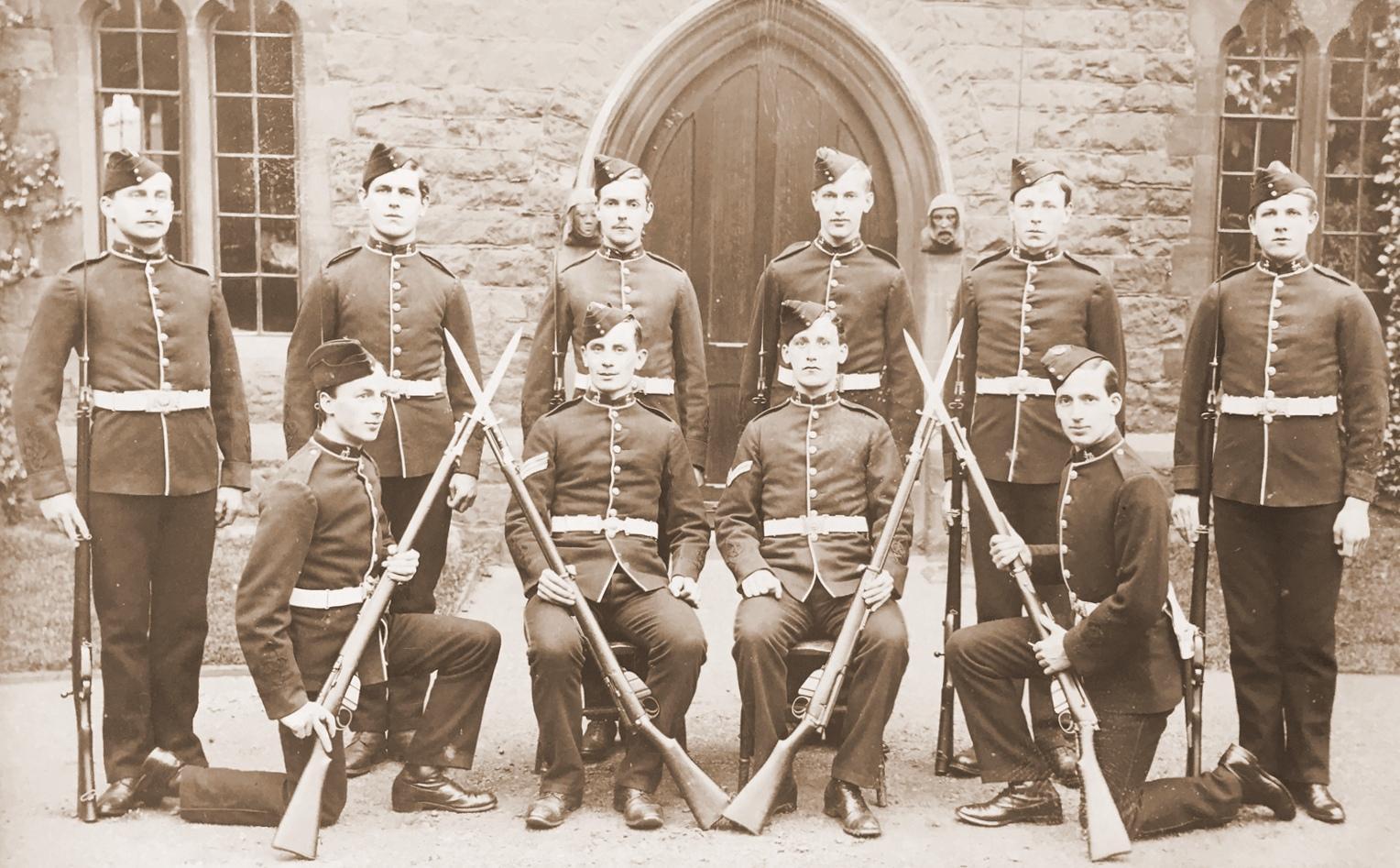

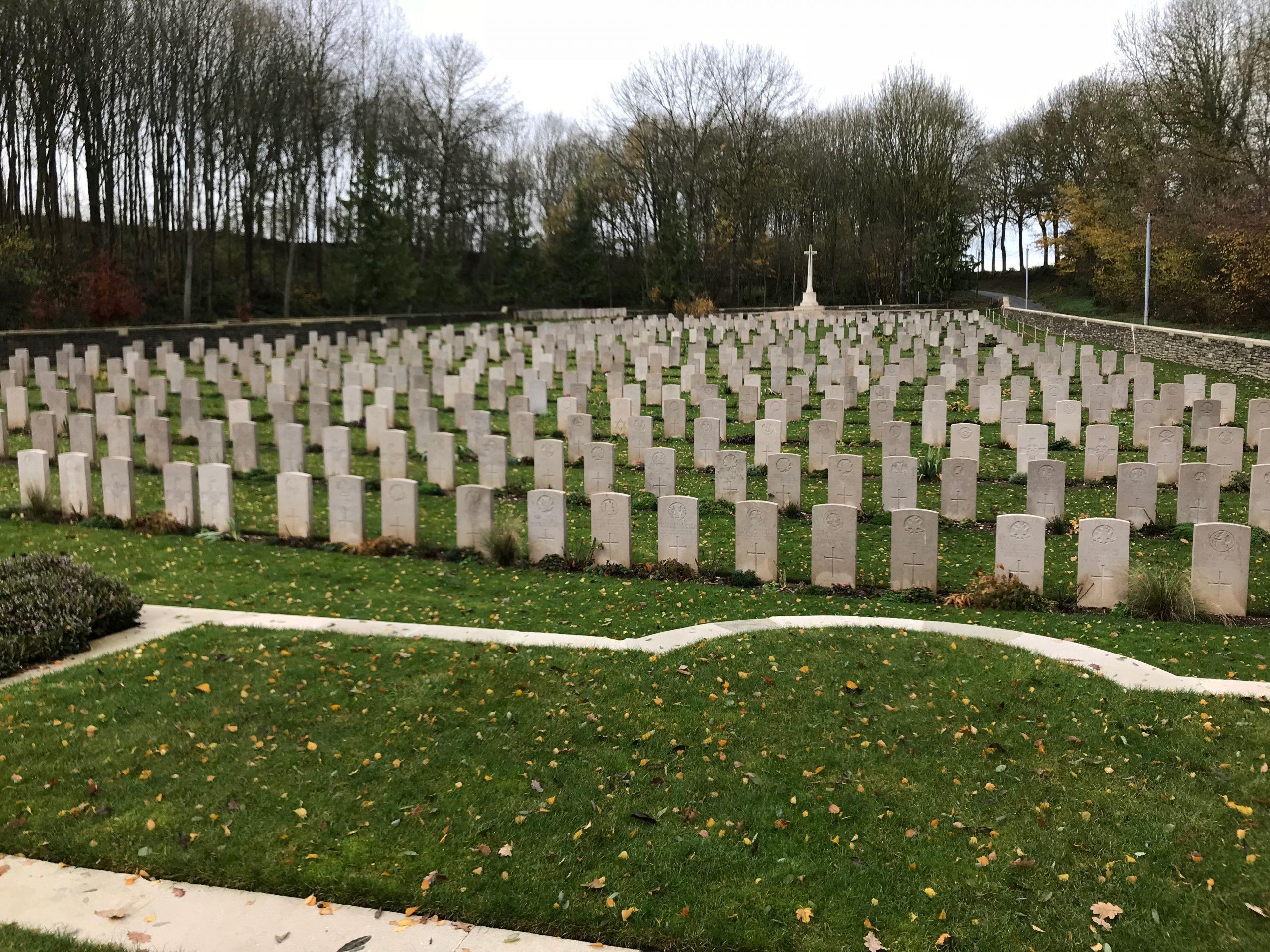


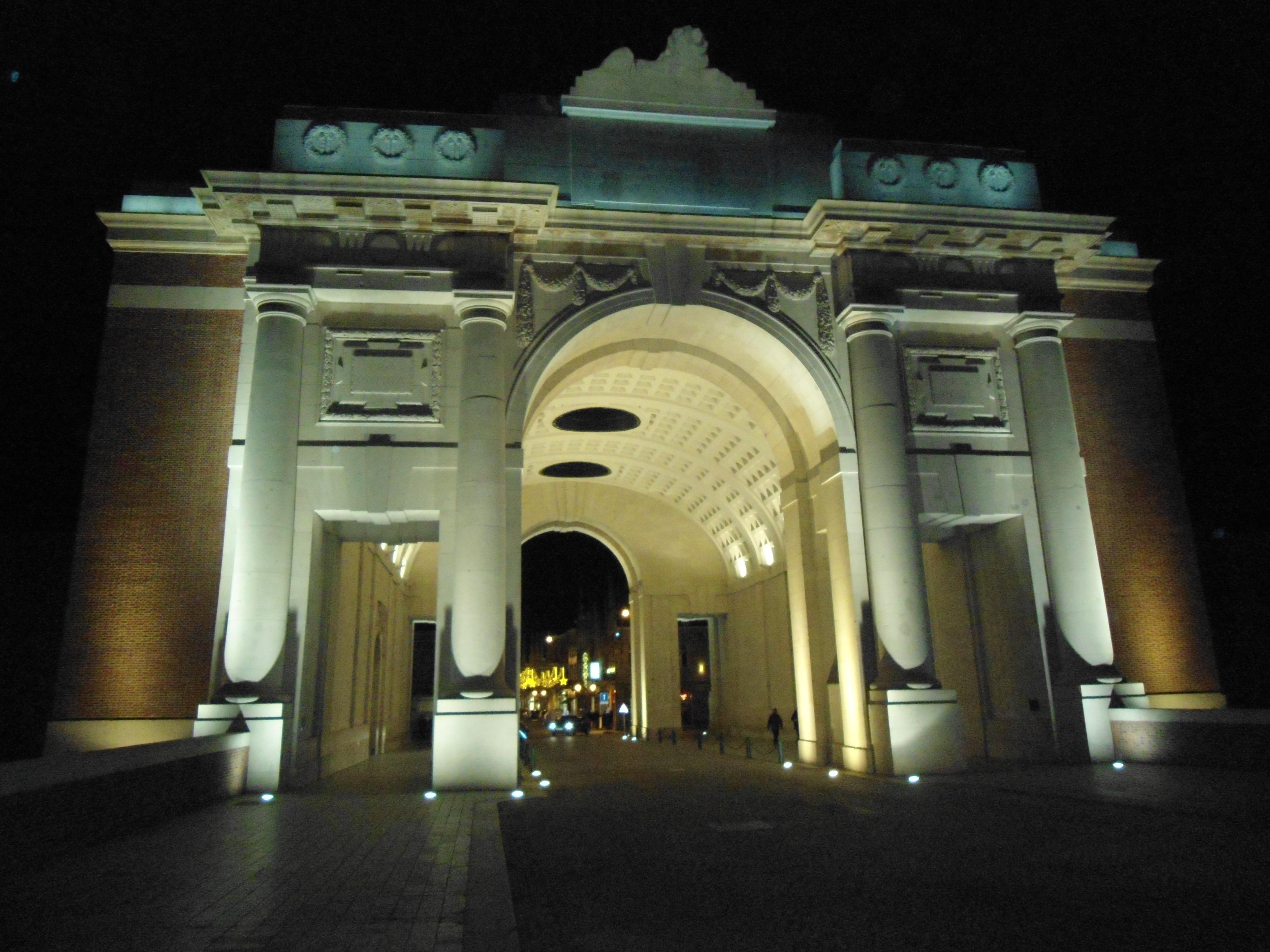






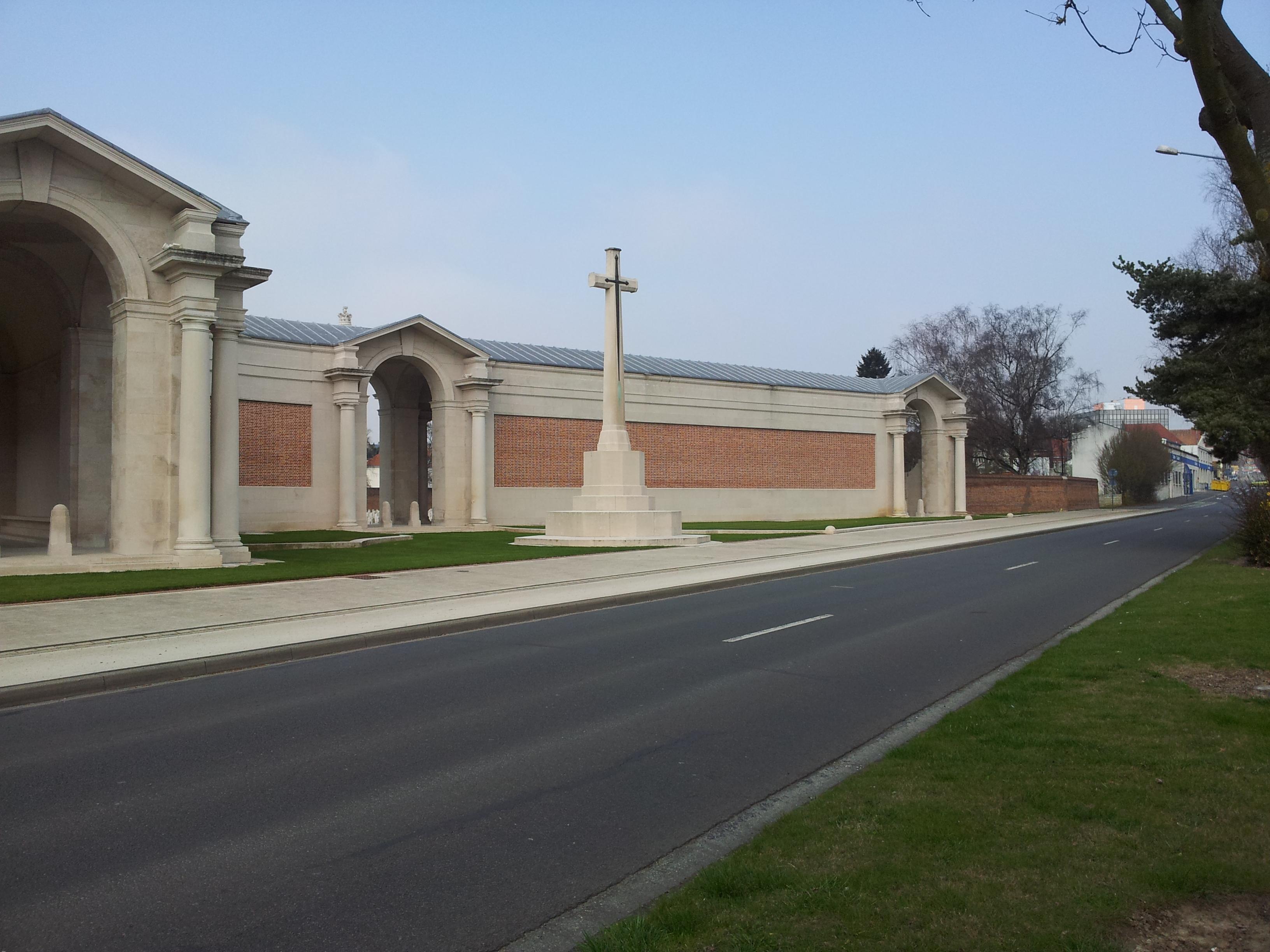
Recent Comments